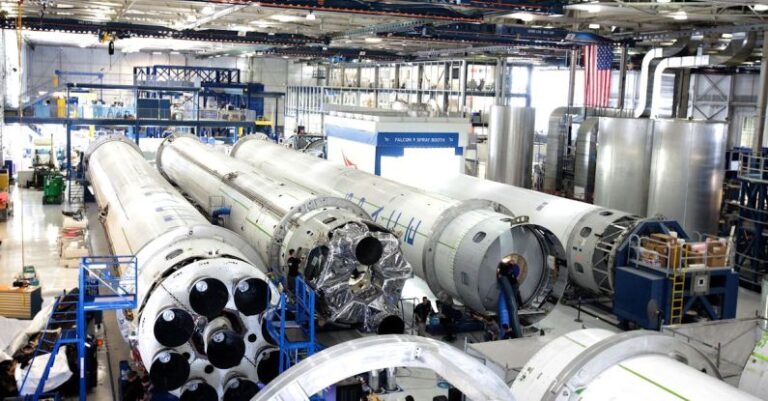
In the realm of technology, the advancement of robotics has always been a topic of fascination and intrigue. What was once considered science fiction is now becoming a reality right before our eyes. With rapid technological developments, futuristic robotics technologies are no longer confined to the imagination but are actively being integrated into various aspects of our lives. From healthcare to transportation and beyond, these innovative robotic technologies are reshaping the way we live and work. Let’s delve into some of the most groundbreaking futuristic robotics technologies that have transitioned into reality.
**Autonomous Vehicles: Revolutionizing Transportation**
One of the most significant advancements in robotics technology that is now a reality is the development of autonomous vehicles. Companies like Tesla, Waymo, and Uber have been at the forefront of this revolution, with self-driving cars becoming increasingly common on the roads. These vehicles use a combination of sensors, cameras, and artificial intelligence to navigate roads, react to traffic signals, and avoid obstacles. The promise of autonomous vehicles lies in their potential to reduce accidents, alleviate traffic congestion, and provide greater mobility for individuals who are unable to drive.
**Robotic Surgery: Precision and Efficiency in Healthcare**
Robotic surgery has transformed the field of healthcare by offering surgeons enhanced precision, control, and flexibility during procedures. Systems like the da Vinci Surgical System enable surgeons to perform minimally invasive surgeries with greater accuracy and dexterity. This technology allows for smaller incisions, reduced blood loss, shorter recovery times, and improved patient outcomes. Robotic surgery is already being used in various specialties, including urology, gynecology, and general surgery, demonstrating its potential to revolutionize traditional surgical practices.
**Exoskeletons: Enhancing Human Strength and Mobility**
Exoskeletons are wearable robotic devices that augment the strength and mobility of the wearer. These futuristic technologies have applications in both medical rehabilitation and industrial settings. Exoskeletons can assist individuals with mobility impairments to walk, stand, and perform daily activities with greater ease. In industrial settings, exoskeletons can reduce the risk of musculoskeletal injuries by supporting workers during physically demanding tasks. Companies like Ekso Bionics and Cyberdyne have developed exoskeletons that are being utilized in healthcare facilities and manufacturing plants, showcasing the transformative potential of this technology.
**Soft Robotics: Mimicking Nature for Versatile Applications**
Soft robotics is a subfield of robotics that focuses on developing robots made from flexible and deformable materials, inspired by the movements of biological organisms. Unlike traditional rigid robots, soft robots can adapt to complex environments, interact safely with humans, and perform delicate tasks with precision. These robots have applications in fields such as medical devices, prosthetics, and search and rescue missions. The versatility of soft robotics opens up new possibilities for creating robots that can navigate challenging terrains, interact with fragile objects, and mimic the capabilities of living organisms.
**Artificial Intelligence in Robotics: The Power of Machine Learning**
Artificial intelligence plays a crucial role in advancing robotic technologies, enabling machines to learn from data, make decisions, and adapt to changing circumstances. Machine learning algorithms empower robots to perform tasks autonomously, recognize patterns, and improve their performance over time. From autonomous drones to robotic assistants, artificial intelligence is driving innovation in robotics by enhancing their cognitive abilities and decision-making processes. As AI continues to evolve, the potential for robots to become more intelligent, intuitive, and responsive is becoming a reality.
**Future Possibilities: Pushing the Boundaries of Robotics**
As futuristic robotics technologies continue to evolve and become more integrated into our daily lives, the possibilities for future advancements are limitless. From swarm robotics to nanobots, the next frontier of robotics holds the potential to revolutionize industries, enhance human capabilities, and address pressing global challenges. By harnessing the power of innovation, collaboration, and imagination, we can expect to see even more groundbreaking robotic technologies emerge in the coming years, shaping a future where science fiction becomes science fact.
**In Summary: Embracing a Robotic Future**
In conclusion, the convergence of technology, artificial intelligence, and robotics has paved the way for a future where futuristic technologies are no longer a distant dream but a tangible reality. Autonomous vehicles, robotic surgery, exoskeletons, soft robotics, and artificial intelligence are just a few examples of the transformative advancements that are shaping our world. As we continue to push the boundaries of innovation and explore new possibilities, the potential for robotics to revolutionize industries, improve quality of life, and drive progress is immense. By embracing a robotic future, we are ushering in an era of unprecedented technological advancements that will redefine the way we live, work, and interact with the world around us.





